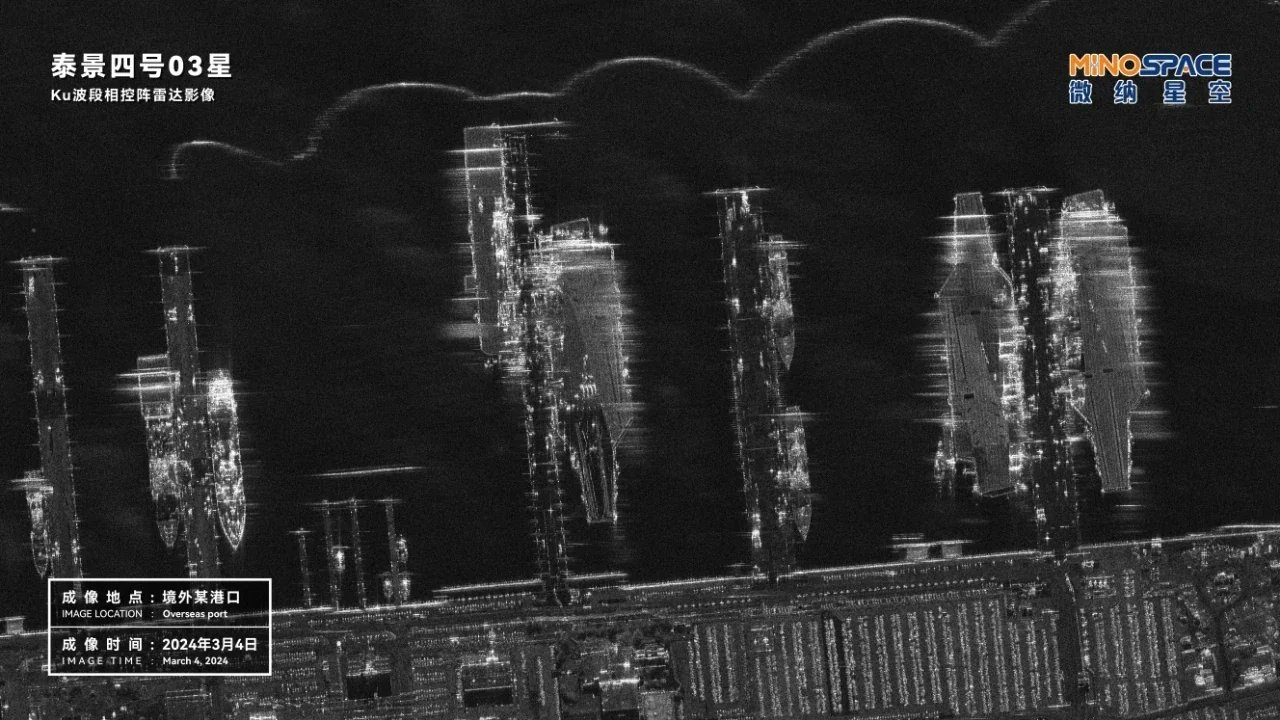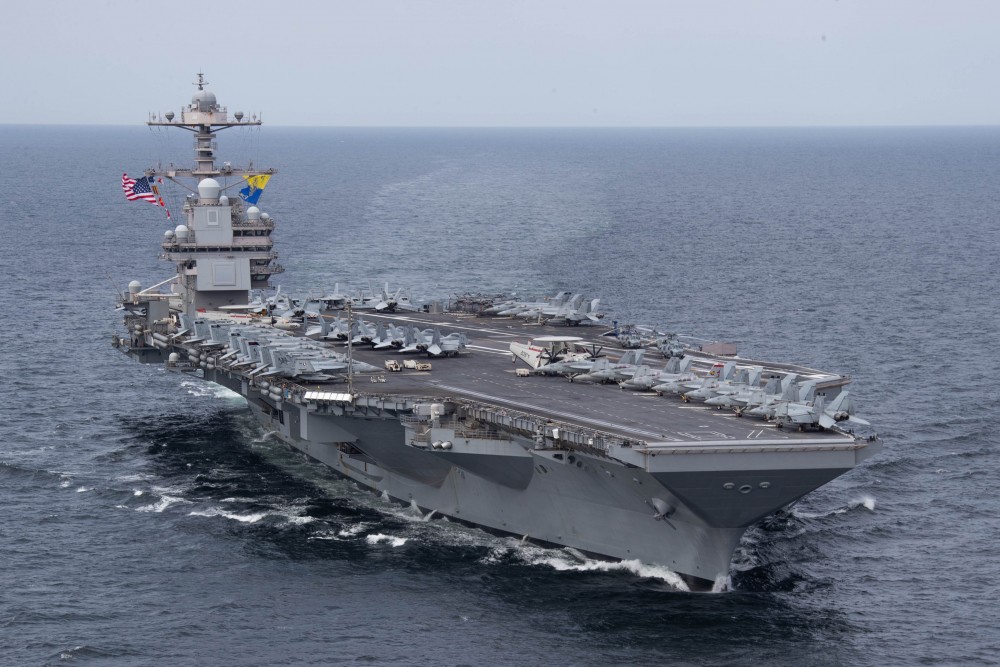In a display of its growing space prowess and surveillance capabilities, radar images of a US Navy base taken by a Chinese satellite are circulating online. Appearing first on China’s domestic social media platform Weibo, defense analysts later identified the spacecraft as the Taijing-4 03 “flat-plate radar imaging satellite” and identified the naval facility as the Naval Station Norfolk in Virginia.
The radar image showed three aircraft carriers, what appeared to be two Arleigh Burke-class warships. Four other vessels in the image, however, cannot be identified.
The Norfolk base, on the east coast of the US, is one of the premier naval bases responsible for projecting power and operations in the Atlantic Ocean and is home to the Military Sealift Command and the submarines of the Atlantic Fleet. It is also the world’s largest shore-based naval establishment, supporting 75 ships and 134 aircraft alongside 14 piers and 11 aircraft hangars.
Satellite Constellation
According to one report, the Taijing-4 03, the first Chinese commercial satellite of phased-array radar imaging in the Ku band, is a part of the Taijing series of satellites. These play a crucial role in China’s “remote sensing capabilities,” offering various applications such as “disaster and environmental surveillance, natural resource exploration, agricultural yield estimation, and land and maritime mapping.”
The satellite’s logo, reading Mino Space (Beijing Weina Star Technology Co. Ltd.), suggests the spacecraft is made by a private Chinese firm. The company released the images as publicity material on Chinese media after the satellite came online.
CGTN meanwhile classified the spacecraft as part of a five-satellite constellation—the Taijing-1 03, Taijing-2 02, Taijing-3 02, and the Taijing-4 03—meant for “scientific research, space probes, and environmental surveys.” They were launched on January 23 this year aboard the “commercial carrier rocket Lijian-1 Y3” from the Jiuquan Satellite Launch Center in northwestern China.

Global Times said that the Taijing-4 03 is equipped with a “synthetic aperture radar and artificial intelligence processors, which can realize rapid detection and identification of targets at sea and airports via real-time image transmission.”
Military Application
SARs have immense military applications, allowing all-weather day and night imaging of ground and surface areas to spot adversary movements and weapons. Thus, Chinese military control over the Taijing-4 03 during wartime cannot be ruled out, even if it is assumed that the company did not specifically target the US naval base and took a general set of pictures of the earth to test and validate the system.
In general, the People’s Liberation Army (PLA) does have a series of other dedicated military satellites and surveillance systems that can easily detect an approaching naval armada days before it reaches its waters. However, a permanent view of a US naval base gives it even deeper insight into the availability and strength of US warships. Possibly, combined with intelligence sources and other analysis, observe other activities at US military facilities to inform its own battleplans.
In January this year, satellite images showed that China had built a replica of the US Navy aircraft carrier USS Gerald R. Ford for use as a target. The mock-ups reflect the trend of the People’s Liberation Army’s (PLA) focus on counter-US aircraft carriers and other capital ships. The targets are more representative of reality and help obtain more accurate data during tests.

Space Race is Heating Up
At a broader level, the satellite is also part of the private space race between the US and China, apart from the general intensifying space exploration contest and the overall military, technological, and political competition.
Beijing, too, has seen several private space technology companies mushroom over the last few years, rivaling US giants like SpaceX, Boeing, and Blue Origin.
But the logistical motive is to have an alternative space-faring infrastructure and unburden national government space agencies like NASA or CNSA as exploration and travel to the Moon and Mars become common over the next centuries.
Data from Chinese market analysis firm iiMedia Research Institute showed that China’s commercial aerospace market value exceeded 1 trillion yuan in 2020, and it is expected to reach 2.3 trillion yuan in 2024.
CGTN also touched upon the privately developed launch rocket, the solid-propellant Lijian-1 rocket. “Developed by the Institute of Mechanics of the Chinese Academy of Sciences (CAS) and CAS Space, it has a takeoff weight of 135 tons, a takeoff thrust of 200 tons, a total length of 30 meters, a core stage diameter of 2.65 meters, and a carrying capacity of 1,500 kg for the 500-kilometer sun-synchronous orbit.”
The rocket was first launched in July 2022 and has already sent 37 satellites into space. It has a 100 percent launch success rate. The mission was the third launch of the Lijian-1 carrier rocket.
- The author can be reached at satamp@gmail.com
- Follow EurAsian Times on Google News




